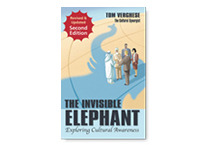 |
| THE CULTURAL SYNERGIST |
|
Listening to understand, rather than listening only to respond, requires a high level of mindfulness and consciousness, especially when we are communicating with people of different cultures. I was facilitating a program in Singapore last month when this thought came to the forefront. I observed the consequences of a situation where a group of people became aware that although they were being listened to, felt that they were not really being heard. Given there were several cultures represented in the room, there was an increased need for clear and effective communication, which unfortunately wasn�t occurring as well as it should have been. The result was that a particular team from a regional office felt disrespected, frustrated and placed little value and trust in the discussion session. I observed this through their responses - or lack of at times, their body language and the overall disengaged atmosphere that pervaded the workshop by the end of day one. A shifting of styles was necessary the following day to achieve the desired outcomes. It is only as we listen to understand that we can observe the cultural nuances and cues that can make for a greater level of understanding and more effective communication. For this to occur our emotional and cultural intelligence needs to be heightened. Different usage of words, accents and body language all make for complexity when communicating with individuals whose native language is different to the one being spoken. Effective listening provides an ability to empathise and be more attuned to the other party�s situation and requirements. Whether you are negotiating, procuring, selling, off-shoring or outsourcing across borders and cultures, you need to listen with the objective of understanding if you want to: Build relationships Gather valid information Understand what is not being said openly Influence, persuade and negotiate How can we demonstrate that we are truly listening?
� Winston
Churchill To read our latest discussion paper - The Business Case for Cultural Intelligence go to: http://www.culturalsynergies.com/images/stories/pdf_article/cq%20paperv3.pdf If you would like to follow our Cultural Intelligence Blog go to: http://culturalsynergies.wordpress.com Best Wishes Tom Verghese Send to Friend |
||||
| Listen to Understand |
||||
 | ||||
|
|
||||||
| RECOMMENDED BOOK: "As One: individual action collective power" by Merhrdad Baghai & James Quigley (2011). | ||||||
 | ||||||
|
|
RESOURCES 'Raising Your Cultural IQ - DVD and CD 'Raising Your Cultural IQ' explores the issues around culture, the challenges that culture can pose and provides some great strategies on how to leverage on cultural differences and similarities. 'The Invisible Elephant - Exploring Cultural Awareness' Book testimonial by Asma Ghabshi Visit our store here | |
 | ||
 | ||
 | ||
 |
|